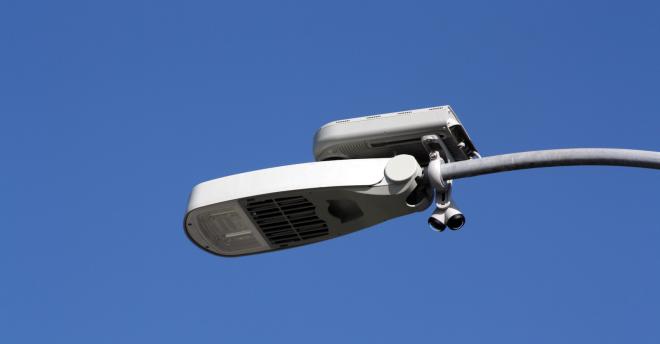
Photo: Mo on Unsplash
San Jose sees the benefits of smart lighting
18 May 2023
The City of San Jose, CA owns and operates around 500 buildings and facilities, covering roughly 8.5 million square feet.
“We were looking for a way to engage with some of the emerging technologies to manage and control our lights and to try features that help to defer or reduce some of our maintenance costs,” said John Wildemuth, Electrical Senior in the Facilities Management Division of San Jose’s Department of Public Works.

Following a Request for Proposals (RFP), San Jose is in the process of deploying around 10,000 smart nodes from Ubicquia on its exterior light fixtures at venues such as fire stations, libraries and community centers. The city is realizing benefits already.
“We’ve seen work orders for lights out significantly reduced,” said Wildemuth. “We used to rely on city staff and citizens to turn in work orders for lights that were not working. Now, we get immediate notifications, and we can respond in days versus weeks or months.”
The system also sends an alert if the power is cut, which is helping the city tackle the ongoing challenge of copper wire theft. In addition, predictive analytics help staff to get ahead of fixture failures.
“We are reducing the amount of truck rolls and maintenance costs. When a maintenance person is required, they can go out with the parts they need and avoid multiple truck rolls,” said Wildemuth. Further, with the smart nodes in place, the city no longer has to send staff out to manually adjust the lights for daylight saving time because they are automatically updated.
Future-ready
Another benefit is that the project has created an opportunity to better catalog lighting assets. For many cities, documentation on lighting assets is very out of date, yet they receive regular requests from leaders and council members to provide the latest information and statistics.
Wildemuth explained: “When we deploy a node, we catalog everything: the type of pole, the fixture, etc. and we try to be as detailed as we can so that down the road when we get any questions, we can just query it in the database. That is really a gamechanger for municipalities.”
With the underlying infrastructure in place, further experimentation is possible.
“We wanted a future-looking product,” said Wildemuth. “And we were looking for something that rolled everything up into one platform.”
The city now has the capability to deploy AI cameras for anonymized people-counting or air quality sensors all on the same infrastructure platform. People-counting is being piloted at two community centers and a handful of air quality sensors are being trialed at city-owned buildings.
The city is also considering bike and pedestrian-counting applications in parks and trails.
Wildemuth said: “One of the things I like about this emerging technology is that we don’t always know what we’re going to use it for in the future. Use cases continue to pop up through creative thinking and partnering with other departments.”
This article is an extract from the new whitepaper, ‘Smart streetlights: The gateway to intelligence-led city management’.
- Download the whitepaper for more city examples and smart lighting best practices.
- Watch the webinar on-demand for more details of San Jose’s deployment and expert insights on smart lighting programs, funding, and privacy best practices.








